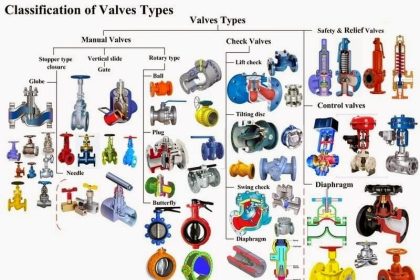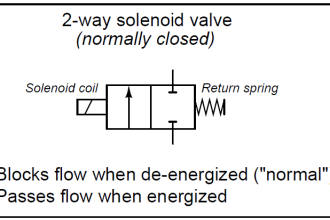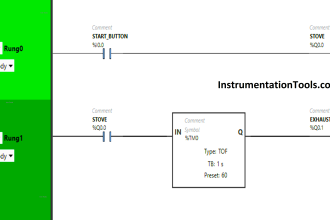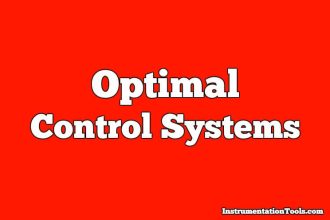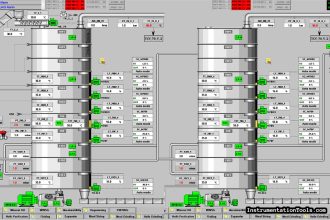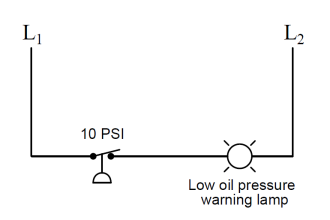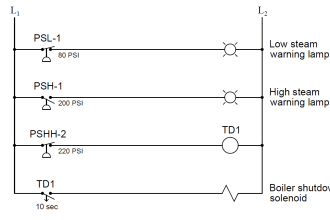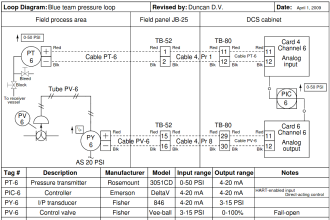Stepper Motor Basics
A stepper motor is a digital device. Digital information is processed by the stepper motor to accomplish an end result, in this case, controlled motion. One may assume that a stepper motor will dependably follow digital instructions, just as a computer is expected. This is the distinguishing feature of a stepper motor.
The stepper motor is an electrical motor that is driven by digital pulses rather than a continuously applied voltage. Inherent in this concept is open-loop control, wherein a train of pulses translates into so many shaft revolutions, with each revolution requiring a given number of pulses.
Each pulse equals one rotary increment, or step (hence named, stepper, stepping, or step motor), which is only a portion of one complete rotation.
Therefore, counting pulses can be applied in the stepper motor to achieve a desired amount of shaft rotation. The count automatically represents how much movement has been achieved, without the need for feedback information, as would be the case in servo systems, and other technologies.
Although not required, most stepper motors can accommodate an encoder when desired.
Note: For this discussion, stepper, stepping and step motor(s) are used interchangeably.
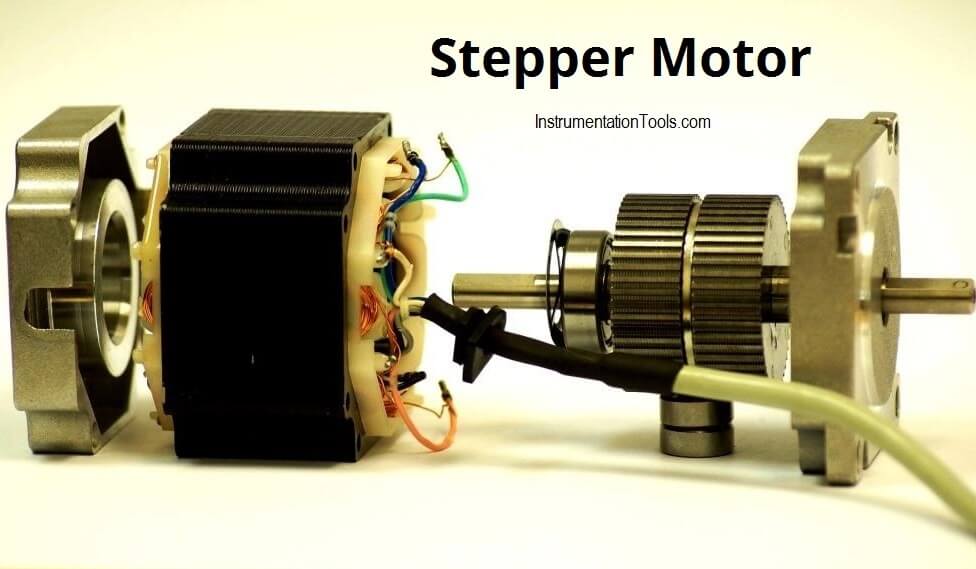
Applications for Stepper Motor
Although the stepper motor has been overshadowed in the past by servo systems for motion control, it has emerged as the preferred technology in more and more areas.
The major factor in this trend towards the stepper motor is the prevalence of digital control, the emergence of the microprocessor, improved designed, i.e. high‐torque models, and the lower cost.
Today, stepper motor applications are all around us: they are used in printers (paper feed, print wheel), disk drives, clocks and watches, as well as used in factory automation and machinery.
Servo Motor applications involves industrial companies operating or designing automated machinery or processes that involve food, cosmetics or medical packaging, labeling or tamper‐evident requirements, cut‐to‐length applications, assembly, conveyor, material handling, robotics, special filming and projection effects, medical diagnostics, camera tracking, inspection and security devices, aircraft controls, pump flow control, metal fabrication (CNC machinery), and equipment upgrades.
A stepper motor is most often found in motion systems that require position control.
Also Read : Stepper Motors Objective Questions & Answers
Types of Stepper Motors
There are three basic types of stepper motor. These stepper motor types vary by construction and in how they function. Each stepper motor type offers a solution to an application in a different way. The three basic types of stepper motor include the Variable Reluctance, Permanent Magnet, and Hybrid.
1. Variable Reluctance (VR) Stepper Motor
The Variable Reluctance stepper motor is known for having a soft iron multiple rotor and a wound stator construction.
The Variable Reluctance stepper motor generally operates in step angles from 5 to 15 degrees at relatively high step rates. They also possess no detent torque.
2. Permanent Magnet (PM) Stepper Motor
The Permanent Magnet stepper motor differs from the Variable Reluctance stepper motor by having permanent magnet rotors with no teeth. These rotors are magnetized perpendicular to the axis. When the four phases are energized in sequence, the rotor rotates as it is attracted to the magnetic poles.
The Permanent Magnet stepper motor generally has step angles of 45 to 90 degrees and tends to step at relatively low rates, but produce high torque and excellent damping characteristics.
3. Hybrid Stepper Motor
The Hybrid stepper motor combines qualities from the permanent magnet and variable reluctance stepper motors. The Hybrid stepper motor has some of the desirable features of each. This type of stepper motor has a high detent torque, excellent holding and dynamic torque, and they can operate in high stepping speeds.
Step angles of 0.9 to 5.0 degrees are normally seen in the Hybrid stepper motor. Bifilar windings are generally supplied to this stepper motor, so that a single power supply can be used to power the stepper motor.
The rotor will rotate in increments of 1.8 degrees if the phases are energized one at a time in the order they are indicated a. This stepper motor can be driven in two phases at a time to yield more torque. The Hybrid stepper motor can also be driven by one then two then one phase to produce half‐steps of 0.9 degree increments.
Stepper Motor Modes
There are three excitation modes that are commonly used with the stepper motor. These stepper motor modes are the full‐step, half‐step‐ and microstep.
1. Stepper Motor ‐ Full‐Step
In full‐step operation, the stepper motor steps through the normal step angle, e.g. 200 step/revolution motors take 1.8 steps, while in half‐step operation 0.9 steps are taken. There are two kinds of full‐step modes.
Single phase full‐step excitation is where the stepper motor is operated with only one phase energized at a time. This mode should only be used in applications where torque and speed performance are not important, wherein the motor is operated at a fixed speed and load conditions are well defined.
Typically stepper motors are used in full‐step mode as replacements in existing motion systems, and not used in new developments. Problems with resonance can prohibit operation at some speeds. This type of mode requires the least amount of power from the drive power supply of any of the excitation modes.
Dual phase full‐step excitation is where the stepper motor is operated with two phases energized at a time. This mode provides good torque and speed performance with a minimum of resonance problems.
Note: Dual excitation, provides about 30 to 40 percent more torque than single excitation, but does require twice the power from the drive power supply. Many of microstep drivers can be set at Full‐Step mode if needed.
2. Stepper Motor ‐ Half‐Step
Stepper motor half‐step excitation is alternate single and dual phase operation resulting in steps one half the normal step size.
Therefore, this mode provides twice the resolution. While the motor torque output varies on alternate steps, this is more than offset by the need to step through only half the angle. This mode offers almost complete freedom from resonance problems.
The stepper motor can be operated over a wide range of speeds and used to drive almost any load commonly encountered. Although half‐step drivers are still a popular and affordable choice, many newer microstep drivers are a cost‐effective alternative.
3. Stepper Motor ‐ Microstep
In the stepper motor microstep mode, a stepper motor’s natural step angle can be divided into much smaller angles.
For example, a standard 1.8 degree motor has 200 steps/revolution. If the motor is microstepped with a ‘divide‐by‐10’, then each microstep moves the motor 0.18 degrees, which is 2,000 steps/revolution.
The microsteps are produced by proportioning the current in the two windings according to sine and cosine functions. This mode is only used where smoother motion or more resolution is required.
Typically, microstep modes range from divide‐by‐10 to divide‐by‐256 (51,200 steps/rev for a 1.8 degree motor).
Some microstep drivers have a fixed divisor, while the more expensive microstep drivers provide for selectable divisors.
Note: In general, the larger the microstep divisor provided, the more costly the stepper motor driver.
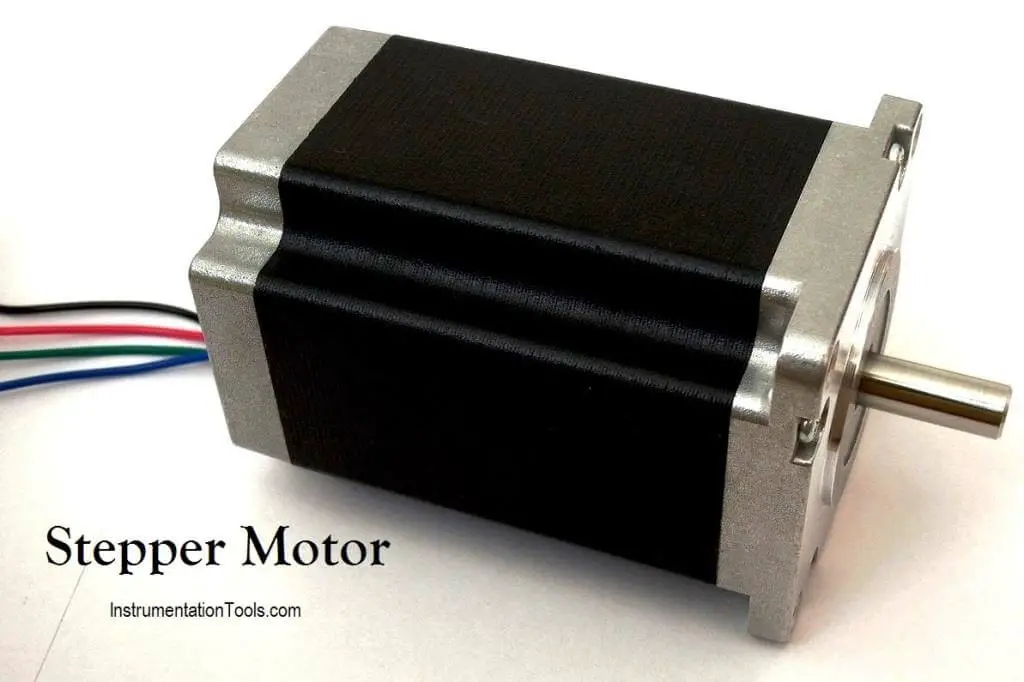
Stepper Motor Feedback
The stepper motor is typically controlled by a driver and indexer/controller. The amount, speed, and direction of rotation of a stepper motor is determined by the specific configuration of digital control devices.
The main types of stepper motor control devices are: stepper motor drivers and stepper motor controllers, which include indexers and pulse generators.
The stepper motor driver accepts the clock pulses and direction signals and translates these signals into appropriate phase curents for the stepper motor.
The stepper motor indexer creates the clock pulses and the direction signals for the stepper motor. The computer or PLC (Programmable Logic Controller) sends out commands to the indexer or controller.
Stepper Motor Environmental Considerations
The following environmental and safety considerations must be observed during all phases of operation, service and repair of a stepper motor system.
Failure to comply with these precautions violates safety standards of design, manufacture and intended use of the stepper motor, driver and controller. Please note that even a well‐built stepper motor operated and installed improperly, can be hazardous under certain cases.
Precaution must be observed by the user with respect to the load and operating environment. The end user is ultimately responsible for the proper selection, installation, and operation of the stepper motor system.
The atmosphere in which a stepper motor is used must be conducive to good general practices of electrical/electronic equipment. Do not operate the stepper motor in the presence of flammable gases, dust, oil, vapor or moisture.
For outdoor use, the stepper motor, driver and controller must be protected from the elements by an adequate cover, while still providing adequate air flow and cooling. Moisture may cause an electrical shock hazard and/or induce system breakdown.
Due consideration should be given to the avoidance of liquids and vapors of any kind. Contact the factory should your application require specific IP ratings. It is wise to install the stepper motor, driver and controller in an environment which is free from condensation, dust, electrical noise, vibration and shock.
Additionally, it is preferable to work with the stepper motor/driver /controller system in a non‐static protective environment. Exposed circuitry should always be properly guarded and/or enclosed to prevent unauthorized human contact with live circuitry.
No work should be performed while power is applied. Don’t plug in or unplug the connectors when power is ON. Wait for at least 5 minutes before doing inspection work on the stepper motor system after turning power OFF, because even after the power is turned off, there will still be some electrical energy remaining in the capacitors of the internal circuit of the stepper motor driver.
Plan the installation of the stepper motor, driver and/or controller in a system design that is free from debris, such as metal debris from cutting, drilling, tapping, and welding, or any other foreign material that could come in contact with circuitry. Failure to prevent debris from entering the stepper motor system can result in damage and/or shock.
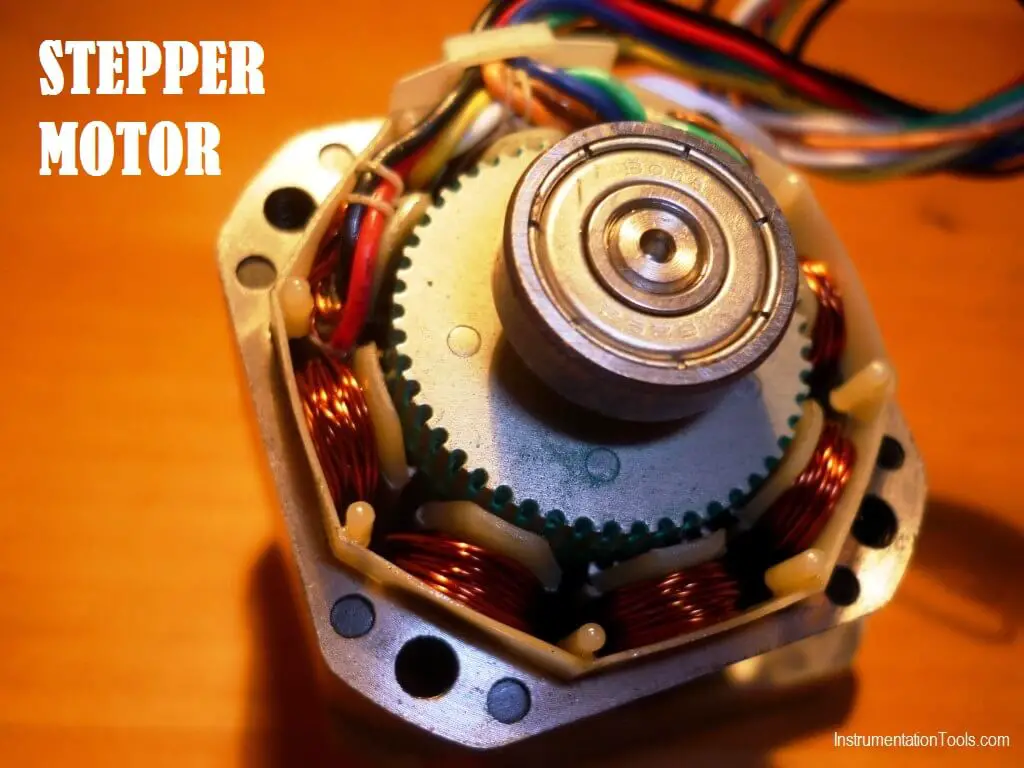
Stepper Motor Wiring
The following information is intended as a general guideline for wiring of the stepper motors.
Be aware that when you route power and signal wiring on a machine or system, radiated noise from the nearby relays, transformers, and other electronic devices can be introduced into the stepper motor and encoder signals, input/output communications, and other sensitive low voltage signals. This can cause system faults and communication errors.
WARNING – Dangerous voltages capable of causing injury or death may be present in the stepper motor system. Use extreme caution when handling, wiring, testing, and adjusting during installation, set‐up, tuning, and operation.
Don’t make extreme adjustments or changes to the stepper motor system parameters, which can cause mechanical vibration and result in failure and/or loss. Once the stepper motor is wired, do not run the stepper driver by switching On/Off the power supply directly.
Frequent power On/Off switching will cause fast aging of the internal components, which will reduce the lifetime of stepper motor system.
Strictly comply with the following rules:
- Follow the Wiring Diagram with each stepper motor
- Route high‐voltage power cables separately from low‐voltage power cables.
- Segregate input power wiring and stepper motor power cables from control wiring and motor feedback cables as they leave the steper motor driver. Maintain this separation throughout the wire run.
- Use shielded cable for power wiring and provide a grounded 360 degree clamp termination to the enclosure wall. Allow room on the sub‐panel for wire bends.
- Make all cable routes as short as possible.
NOTE: Factory made cables are recommended for use in our stepper motor and driver systems. These cables are purchased separately, and are designed to minimize EMI.
These cables are recommended over customer‐built cables to optimize system performance and to provide additional safety for the stepper motor system and the user.
WARNING – To avoid the possibility of electrical shock, perform all mounting and wiring of the stepper motor and driver system prior to applying power. Once power is applied, connection terminals may have voltage present.
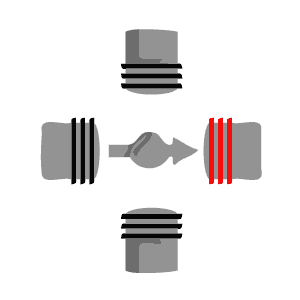
Fig : Stepper Motor Animation
Stepper Motor Mounting
The following information is intended as a general guideline for the installation and mounting of the stepper motor system.
WARNING – Dangerous voltages capable of causing injury or death may be present in the stepper motor system. Use extreme caution when handling, testing, and adjusting during installation, set‐up, and operation. It is very important that the wiring of the stepper motor and driver be taken into consideration upon installation and mountin.
Subpanels installed inside the enclosure for mounting stepper motor system components, must be a flat, rigid surface that will be free from shock, vibration, moisture, oil, vapors, or dust.
Remember that the stepper motor and driver will produce heat during work; therefore, heat dissipation should be considered in designing the system layout. Size the enclosure so as not to exceed the maximum ambient temperature rating.
It is recommended that the stepper motor driver and controller be mounted in position as to provide adequate airflow. The stepper motor should be mounted in a stable fashion, secured tightly, to minimize vibration.
NOTE: There should be a minimum of 3 inches between the stepper motor driver and any other devices mounted in the system/electric panel or cabinet. If using relays in your motion system, take care to protect the relays and the stepper driver and controller, and always run these wires separately. When using a DC relay, put a diode across the coil, and when using an AC relay, be sure to use a MOV.
NOTE: In order to comply with UL and CE requirements, the stepper motor system must be grounded in a grounded conducive enclosure offering protection as defined in standard EN 6052 (IEC 529) to IP55 such that they are not accessible to the operator or unskilled person.
As with any moving part in a system, the stepper motor should be kept out of the reach of the operator. A NEMA 4X enclosure exceeds those requirements providing protection to IP66. To improve the bond between the power rail and the subpanel, construct your subpanel out of a zinc‐plated (paint‐free) steel.
Additionally, it is strongly recommended that the stepper motor driver and/or controller be protected against electrical noise interferences. Noise from signal wires can cause mechanical vibration and malfunctions.
Also Read : Difference between Stepper Motor and Servo Motor
Common Causes for Stepper Motor and/or Stepper Driver Failure
Note: Always read the specification sheet/user’s guide that accompanies each device.
Problem: Intermittent or erratic stepper motor or stepper driver function.
Solution: This is the most common cause of failure and one of the most difficult to detect. Start by checking to insure that all connections are tight between the stepper motor and the stepper driver and controllers.
Evidence of discoloration at the terminals/connections, may indicate a loose connection. When replacing a stepper motor, stepper driver or Driver Pack, or controller in a motion control system, be sure to inspect all terminal blocks and connectors.
Check cabling/wiring for accuracy. Stress stepper motor wiring and connections for worse conditions and check with an ohmmeter. Whenever possible, use shielded cables for stepper motor wiring.
Problem: Stepper motor wires were disconnected while the driver was powered up.
Solution: Avoid performing any service to the stepper motor, driver or controller while the power is on, especially in regard to the motor connections. This precaution is imperative for both the driver, as well as the technician/installer.
Problem: Poor system performance.
Solution: Check to see if the wire/cables are too long. Keep wire/cable to the stepper motor under 25 feet in length. For applications where the wiring from the stepper motor to the stepper driver exceeds 25 feet, please contact the factory for instructions, as it is likely that transient voltage protection devices will be required.
Another possibility is that the stepper motor lead wires are of a gauge that is too small. Do not match your cable wires to the gauge size the stepper motor lead wires. This is a common mistake, so we suggests using its shielded cable for such wiring.
Additionally, check the age of your stepper motor, as with time and use, stepper motors lose some of their magnetism which affects performance.
Typically one can expect 10,000 operating hours for stepper motors (approximately 4.8 years, running one eight‐hour shift per work day).
Also, make certain that your stepper motor and driver combination is a good match for your application. Contact the factory, should you have any concerns.
Problem: The stepper motor has a shorted winding or a short to the motor case.
Solution: It is likely that you have a defective stepper motor. Do not attempt to repair motors. Opening the stepper motor case may de‐magnetize the motor, causing poor performance.
Opening of the stepper motor case will also void your warranty. The motor windings can be tested with an ohmmeter.
Problem: The stepper motor driver or Driver Pack is over‐heating.
Solution: Ventilation and cooling accommodations are essential – failure to provide adequate airflow will affect the stepper motor driver’s performance and will shorten the life of the driver Keep driver temperatures below 60 degrees Celsius.
To maintain good airflow, use fans, heat sink material, and base plates, so not to exceed the maximum temperature rating of the stepper motors, drivers or controllers. Be mindful of temperatures inside cabinets and enclosures where stepper drivers may be mounted.
Note: Painted surfaces do not make good heat sink material for stepper motor drivers and controllers. Also, be certain that the environment is free from dust and debris that can clog a fan‐cooled system.
Problem: Environmental factors are less than ideal.
Solution: Environmental factors, such as welding, chemical vapors, moisture, humidity, dust, metal debris, etc., can damage both the electronics and the stepper motor.
Protect drivers, controllers and stepper motors from environments that are corrosive, contain voltage spikes, or prevent good ventilation.
For wash‐down or explosion‐proof motors, contact the factory direct. For AC lines that contain voltage spikes, a line regulator (filter) will likely be required.
Note: If your application requires welding, or if welding is done in the same work environment, contact the factory for advice on how to protect the stepper motor driver and controller.
Problem: Pulse rates (Clock or Step) to the driver are too high.
Solution: The typical half‐step driver can drive a stepper motor at a maximum rate of 20,000 pulse per second. Pulse rates of above 60,000 pulses per second can damage the driver.
See individual specification sheets for the motor and driver combination for best performance.
Problem: The stepper motor is stalling.
Solution: In some cases, stalling the stepper motor causes a large voltage spike that often damages the phase transistors on the driver.
Some drivers are designed to protect itself from such an occurrence. If not, Transient Suppression Devices can be added externally. Consult the factory for further information.
Problem: The stepper motor is back‐driving the stepper driver.
Solution: A stepper motor that is being turned by a load creates a back EMF voltage on the driver. Higher speeds will produce higher voltage levels.
If the rotational speed gets very high, this voltage might cause damage to the driver. This is especially dangerous when the motor is back‐driven while the driver is still on. Put a mechanical stop or brake in applications that might be subject to these phenomena.
General Safety Considerations for Stepper Motor Applications
The following safety considerations must be observed during all phases of operation, service and repair. Failure to comply with these precautions violates safety standards of design, manufacture, and intended use of the stepper motor, driver and controller.
Safety precautions must be observed by the user with respect to the load and operating environment.
In Summary:
- Use caution when handling, testing, and adjusting during installation, set‐up and operation
- Service should not be performed with power applied
- Exposed circuitry should be properly guarded or enclosed to prevent unauthorized human contact with live circuitry
- All units should be securely mounted and adequately grounded
- Provide adequate air flow and heat dissipation
- Do not operate in the presence of flammable gases, vapors, liquids or dust
Article Source : Anaheim Automation
